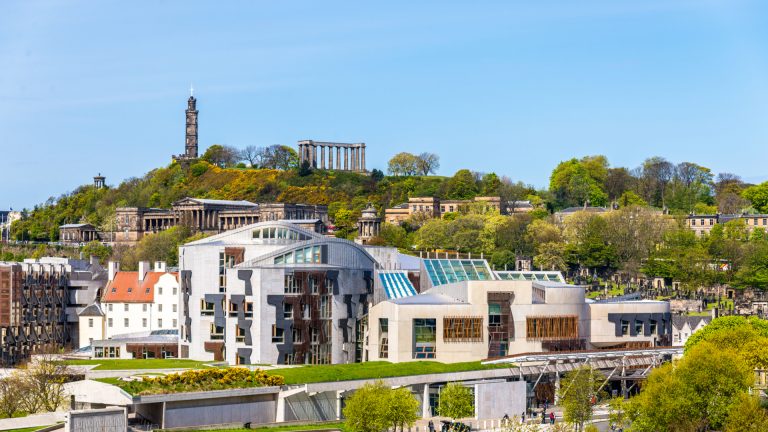The latest GDP estimates for Scotland show that the Scottish economy grew by 6.8% in July compared to June. However, Scottish GDP remains 10.7% below its level in February, prior to the effect of the Covid-19 pandemic.
Accommodation & food services and arts, entertainment, and recreation continue to be the sectors which have been most negatively impacted by the Covid crisis in terms of business closure and furloughed workers. There is also significant variation amongst Scottish local authorities in terms of the rise in the number of universal credit and jobseeker’s allowance claimants and the pace at which workers are returning to workplaces. The current crisis continues to pose a challenge for public finances, with LBTT revenues remaining significantly below last year’s levels throughout the summer months.
The number of furloughed workers has fallen significantly between July and August in Scotland, and the rest of the UK, as the UK Government’s Coronavirus Job Retention Scheme started winding down. The number of furloughed workers has fallen significantly between July and August in Scotland, and the rest of the UK, as the UK Government’s Coronavirus Job Retention Scheme started winding down. The new Job Support Scheme announced yesterday is designed to keep some support going but in a new format, and we will report on new data on this scheme as it is made available.
Chart 1: Effect of the Covid-19 pandemic on business capital expenditure, UK nations, 24th August – 6th September: Scotland and Wales have the highest share of businesses who have decreased or completely stopped capital expenditure due to the pandemic. Over 30% of Scottish businesses have decreased their capital expenditure due to the pandemic and around 13% have completely stopped new capital investment.

Source: ONS BICS
Chart 2: Share of businesses that are currently trading, broken down by industry, Scotland, 15th June – 6th September 2020: the accommodation & food services and arts, entertainment & recreation sectors saw the largest number of businesses temporarily pausing trading. Since the start of the lockdown, a sizable share of businesses have reopened, but at the start of September only 85% and 64%, respectively, of businesses in these sectors were trading. Other sectors of the Scottish economy have been less severely affected and the majority of temporarily closed businesses had resumed trading by the start of September.

Source: Scottish Government
Chart 3: Share of eligible jobs furloughed, English regions & devolved nations of the UK, July and August 2020: the share of furloughed jobs fell sharply from July to August as the Coronavirus Job Retention Scheme began scaling back. In Scotland, the share of furloughed jobs fell from 32% in July to 15% in August. London currently has the highest share of furloughed jobs (17%) and the North East has the lowest (13%).

Source: HMRC
Chart 4: Estimated share of workforce on furlough leave, broken down by industry, Scotland, 1st June – 6th September: in August / beginning of September, the arts, entertainment, and recreation sector had the highest share of furloughed workers (58%) followed by accommodation & food services (34%). The construction sector had over a half of all workers on furlough at the beginning of June but was fast to recover, with just over 10% of the workforce remaining on furlough in August / beginning of September.

Source: Scottish Government
Chart 5: Claimant Count as a share of working age population, Scottish local authorities, August 2019 and August 2020: the year-on-year increase in the number of claimants as a share of working age population was sharpest in Glasgow and West Dunbartonshire in August. Orkney and Inverclyde were the least affected local authorities.

Source: ONS NOMIS
Chart 6: Mobility to workplaces, Scottish cities and selected local authorities, 21st February – 11th September: workers in large city-based local authorities such as Edinburgh and Glasgow have been returning to workplaces more slowly compared to workers in smaller cities and rural areas. Mobility to workplaces may decline in the coming weeks as both the UK and Scottish government’s have asked people again to work from home where they can.

Source: Google Mobility Trends
Chart 7: Total Land Business and Transaction Tax self-reported liability, Scotland, 2019 – 2020: A total self-reported tax liability of £35.2m was declared by taxpayers in August 2020. Tax revenue from LBTT in August was £0.2m lower than July 2020, and £21.4m lower than August 2019.

Source: Revenue Scotland
Note on our real-term indicators analysis:
We review newly available data each fortnight and provide a regularly updated snapshot of indicators that can provide information on how the economy and household finances are changing. This allows us to monitor changes in advance of official data on the economy being released and also to capture key trends that will be missed by measures such as GDP. Each fortnight we investigate new sources from known data sources and use publicly available data.
Authors
The Fraser of Allander Institute (FAI) is a leading economy research institute based in the Department of Economics at the University of Strathclyde, Glasgow.
